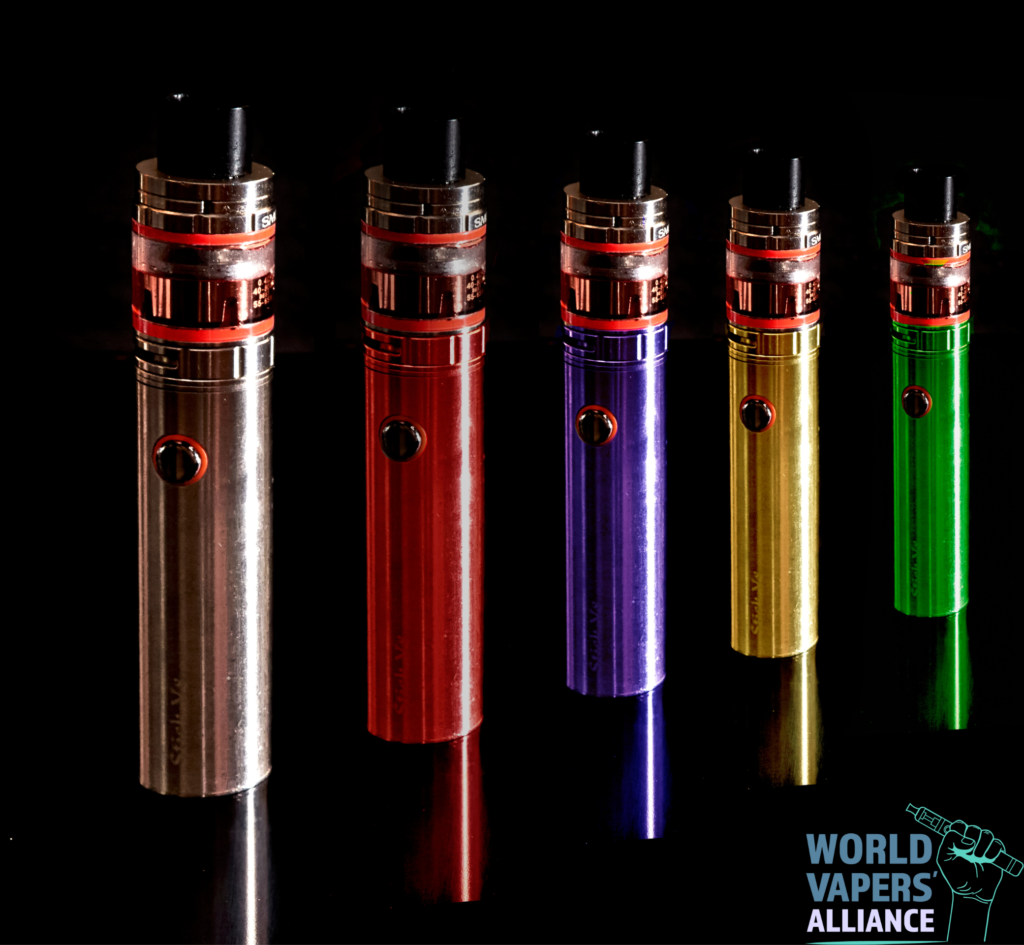As altas taxas de tabagismo representam uma das maiores ameaças à saúde pública que a Itália enfrenta. De acordo com o Relatório de 2022 sobre o tabagismo na Itália Quase 1 em cada 4 italianos (24,21% da população) fuma. Esta é a taxa mais alta registada desde 2006, 2 pontos percentuais acima da taxa apresentada no último relatório antes da pandemia (22,1% da população). Por isso, a Itália está a pagar um preço elevado: com mais de 90 mil mortes por ano Causadas por doenças relacionadas ao tabaco, o consumo de tabaco tornou-se o maior fator de risco evitável para a saúde, sendo responsável por 20,61 mil milhões de mortes entre homens e 7,91 mil milhões de mortes entre mulheres. Os custos associados a isso ultrapassam os 26 mil milhões de euros.
Felizmente, o recente surgimento de produtos de nicotina com danos reduzidos, como o vaping, representa uma esperança para os fumantes: um regime de vaping favorável ao consumidor, como o do Reino Unido, permitiria 2,75 milhões de fumantes na Itália vão trocar o cigarro eletrônico pelo cigarro tradicional e viver vidas mais saudáveis.. Ao mudar para isto 95% alternativa menos prejudicial, As pessoas podem melhorar substancialmente suas vidas e a saúde pública se beneficiará enormemente.
Para que isso aconteça, o governo italiano precisa mudar substancialmente sua abordagem em relação ao vaping e promover políticas de redução de danos do tabaco tanto em nível nacional quanto europeu. A recente formação do novo governo italiano, juntamente com a próxima atualização da Diretiva de Produtos de Tabaco (TPD) da UE, representa uma oportunidade ideal para mudar a perspectiva e a regulamentação do vaping na Itália. Para ajudar a alcançar esse objetivo, A Aliança Mundial dos Cigarros Eletrônicos apresentou ao governo italiano um plano de 7 etapas para reduzir as taxas de tabagismo na Itália.. Os 7 passos são os seguintes:
- Adote a redução dos danos causados pelo tabaco: O governo italiano precisa assumir um compromisso claro com o conceito de redução dos danos causados pelo tabaco e priorizar soluções práticas, como o vaping, em vez de abordagens irrealistas como a do "pare de fumar ou morra". Incentivar os fumantes atuais a migrarem para o vaping e garantir o acesso a produtos de vaping para adultos será fundamental para a redução das taxas de tabagismo na Itália.
- Promover o uso de cigarros eletrônicos como ferramenta para parar de fumar: Encorajamos o governo italiano a iniciar uma campanha de informação sobre as vantagens do vaping em comparação com o tabagismo, direcionada tanto ao público em geral quanto aos médicos. Além disso, os profissionais de saúde devem ser instruídos sobre o potencial do vaping para a saúde pública e qualificados para prescrevê-lo como terapia antitabaco. O vaping comprovadamente é o método mais eficaz para parar de fumar E em alguns países, os médicos já os recomendam aos fumantes como uma alternativa mais saudável.
- Permitir o uso de cigarros eletrônicos em áreas externas onde é proibido fumar: Ao contrário do que acontece com o tabagismo, Não há evidências de que o uso passivo de cigarros eletrônicos seja prejudicial.. Portanto, o uso de cigarros eletrônicos deve ser proibido em áreas livres de fumo destinadas a fumantes. Isso seria mais um incentivo para que os fumantes optassem por uma alternativa mais segura, caso pudessem usar cigarros eletrônicos em qualquer lugar ao ar livre.
- Reduzir a tributação sobre produtos de vaporização e ajustá-la ao seu risco relativo.Alternativas menos nocivas não devem se tornar produtos de luxo. No entanto, a Itália é um dos países onde os líquidos com nicotina pagam os impostos mais altos. Está comprovado que O aumento dos preços dos produtos de vaporização desestimula o seu uso e leva a taxas mais elevadas de tabagismo. E, do ponto de vista da saúde pública, não faz sentido que os produtos de vaporização sejam regulamentados e tributados da mesma forma que o tabaco fumado, visto que são muito menos nocivos. Os produtos de vaporização devem ser tributados a um nível ajustado ao seu risco relativo em comparação com o tabaco.
- Rejeitar proibições de saboresOs sabores dos cigarros eletrônicos permitem que os usuários esqueçam o gosto do tabaco e são um dos principais motivos pelos quais os fumantes não voltam a fumar depois de migrarem para o vape. Mais de dois terços dos usuários de cigarros eletrônicos utilizam sabores diferentes do tabaco. Aqueles que usam aromatizantes têm 230% mais probabilidade de parar de fumar. do que aqueles que não usam sabores em cigarros eletrônicos. Instamos o Governo Italiano a rejeitar todas as propostas de proibição de sabores, pois elas podem potencialmente causar problemas. Faz com que 5 em cada 10 usuários de cigarros eletrônicos voltem a fumar ou a recorrer ao mercado negro., onde não há garantia de segurança ou qualidade.
- Mantenha o acesso a cigarros eletrônicos, ao mesmo tempo que implemente regulamentações inteligentes para impedir rigorosamente o uso por menores de idade: Proibir cigarros eletrônicos ou seus sabores não é a solução para manter menores de idade longe do vaping. Proibições, ou algumas políticas propostas em outros Estados-Membros da UE, como a proibição da venda online ou a limitação a tabacarias estatais, causariam mais danos do que benefícios e são fortemente desencorajadas. Em vez disso, medidas como o aumento das multas para quem vende produtos de vaping a menores ou simplesmente a alocação de mais recursos para a aplicação da lei podem ser a solução. O governo italiano deve concentrar-se na prevenção do vaping entre menores de idade sem dificultar o acesso dos fumantes ao vaping.
- Promover a redução dos danos causados pelo tabaco nas instituições e legislações da UE: A embalagem, a publicidade e os níveis de nicotina contidos nos líquidos são regulamentados a nível da UE. Dado que a Diretiva de Produtos de Tabaco (TPD) será revista em breve, encorajamos vivamente o Governo italiano a desempenhar um papel ativo nesse processo, promovendo a redução dos danos causados pelo tabaco nas instituições europeias e combatendo a legislação que reduz a liberdade de escolha do consumidor e restringe o uso de cigarros eletrónicos.
O plano de 7 etapas também foi apresentado em uma coletiva de imprensa em Roma na semana passada e faz parte da campanha “Apoie o Vaping. Vença o Câncer” da WVA. Se você quiser apoiar a causa, assine a petição. AQUI




